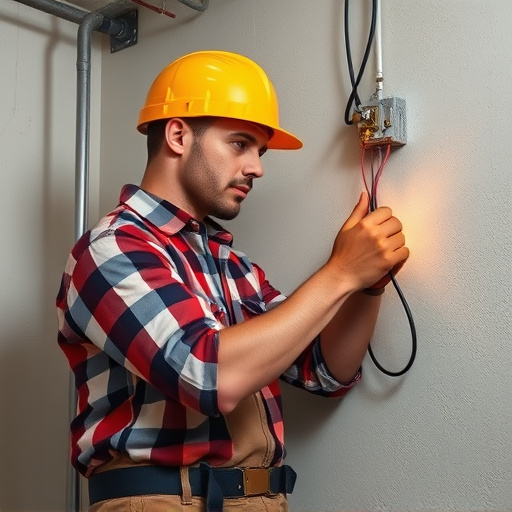Mass Airflow Sensors (MAS) are critical for modern vehicles' precise air volume calculations, optimizing combustion and performance. Integrating MAS with compatible intakes provides real-time data, ensuring minimal errors in air intake measurements. This integration is vital for high-performance and turbocharged vehicles, enhancing overall vehicle efficiency and precision in diverse applications from automotive to industrial machinery. Regular calibration checks and strategic sensor placement are essential practices for maintaining optimal performance during air volume calculation processes.
In the pursuit of optimal engine performance, precise air volume calculation is paramount. This article guides you through the essentials of achieving accuracy, delving into two key aspects: understanding mass airflow sensors, the backbone of accurate calculations; and integrating compatible intakes to enhance precision. We also explore best practices and common pitfalls in air volume optimization, ensuring your vehicle’s engine receives the perfect air-fuel mixture for peak efficiency.
- Understanding Mass Airflow Sensors: The Basis of Accurate Calculations
- Integrating Compatible Intakes for Enhanced Precision
- Optimizing Air Volume Calculation: Best Practices and Common Pitfalls
Understanding Mass Airflow Sensors: The Basis of Accurate Calculations

Mass Airflow Sensors are essential components in modern vehicles, playing a pivotal role in ensuring accurate air volume calculations. These sensors measure the mass flow rate of air entering the engine, providing critical data for optimal combustion and performance. By gauging the amount of air taken in, they enable precise control of fuel injection, enhancing efficiency and reducing emissions.
In the context of compatible intakes, mass airflow sensors are designed to work seamlessly with specific intake systems. These sensors can be integrated into the air intake housing or placed strategically along the airflow path. This direct measurement of incoming air ensures accuracy in calculating the volume of air reaching the engine, which is crucial for maintaining optimal performance and fuel economy, especially in high-performance vehicles or those equipped with turbocharged engines.
Integrating Compatible Intakes for Enhanced Precision

In the quest for precise air volume calculations, integrating mass airflow sensors with compatible intakes plays a pivotal role. These sensors provide real-time data on air entering the system, offering unparalleled accuracy in measuring airflow. By ensuring that the intakes are designed to seamlessly work with these sensors, engineers can minimize errors and variability, leading to more reliable results.
This integration allows for constant monitoring and adjustment of air intake, which is crucial for maintaining optimal performance in various applications, from automotive engines to industrial machinery. With compatible intakes, the system can efficiently regulate airflow based on sensor feedback, enhancing overall efficiency and precision in air volume calculation.
Optimizing Air Volume Calculation: Best Practices and Common Pitfalls

Optimizing air volume calculation involves a blend of precise measurement techniques and meticulous attention to detail. One key best practice is integrating mass airflow sensors (MAS) into compatible intakes. These sensors provide real-time data on air mass flow, enabling more accurate calculations by accounting for variations in air density and temperature. By ensuring the MAS is compatible with your intake system, you maintain optimal performance throughout the calculation process.
Avoiding common pitfalls is equally crucial. One major error to watch out for is neglecting calibration checks of both the MAS and other measurement devices involved. Regular calibration ensures that each component provides accurate readings, thereby preserving the overall calculation integrity. Additionally, inconsistent or suboptimal placement of sensors can introduce inaccuracies. Always position sensors correctly and consider factors like turbulence and flow patterns to ensure reliable data collection.
Accurately calculating air volume is paramount in automotive engineering, especially for optimizing performance. By understanding the fundamentals of mass airflow sensors and their role in measuring precise air intake, along with integrating compatible intakes, engineers can achieve enhanced calculation accuracy. Adhering to best practices, such as regular sensor calibration and ensuring proper intake design, helps avoid common pitfalls like measurement errors and drifts in data readings. This ensures reliable and efficient air volume calculations, ultimately contributing to improved engine performance and fuel efficiency.














